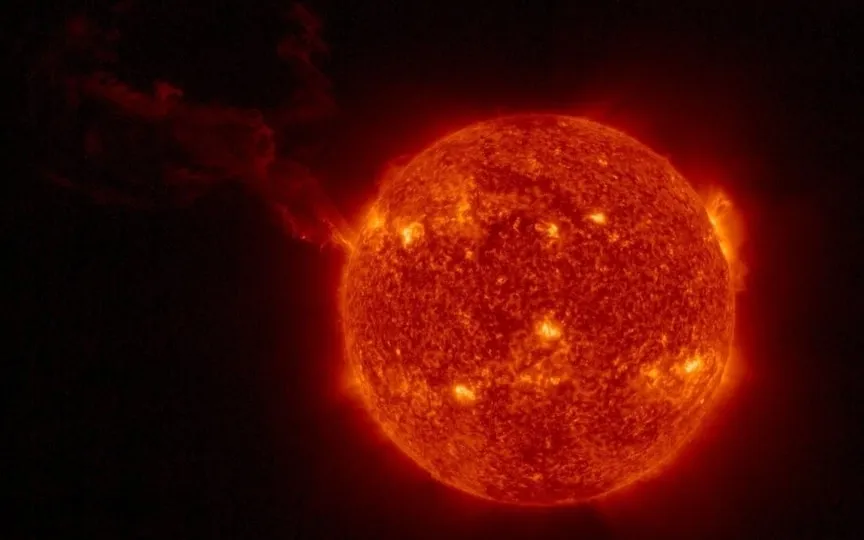NASA Discovers Solar Storm Rushing Out of ‘Canyon of Fire’; Could Impact Earth on November 4
Fortunately, there were no solar storm incidents on Halloween, unlike the memorable event in 2003 when NASA’s Solar and Heliospheric Observatory had to temporarily lower its altitude and Sweden experienced a one-hour power outage. However, the Earth is not yet out of danger. A recent magnetic filament eruption in the Sun’s ‘canyon of fire’ region led to the release of a new coronal mass ejection (CME). Initially, NASA detected it but predicted that it might not impact our planet. However, the National Oceanic and Atmospheric Administration (NOAA) now forecasts that it will graze us, potentially causing a solar storm.
The information comes from SpaceWeather.com, which said: “The Sun’s magnetic filament erupted on Halloween night, creating a ‘canyon of fire’ in the Sun’s southern hemisphere. Original NASA models of the resulting CME suggested it would miss Earth. New images of the same CME However, NOAA models point to a striking impact on November 4. If so, the impact could produce a small G1 class geomagnetic storm at high latitudes.
A solar storm can hit on November 4
The forecast has called for a G1 storm, which essentially means it will produce aurora borealis and may cause interference to some radio waves, likely resulting in communication disruptions for mariners, pilots, drone pilots and radio amateurs.
However, this is not the full number of solar storms. In the worst cases, such storms can disrupt GPS and cell phone networks, disrupt Internet connectivity, damage satellites, cause power grid outages, and even corrupt electronics on the ground.
How NASA SOHO observes the Sun
NASA’s SOHO is a satellite launched on December 2, 1995. It is a joint project between NASA and the European Space Agency (ESA) to study the Sun, its atmosphere, and its effects on the Solar System. SOHO is equipped with 12 scientific instruments such as Extreme Ultraviolet Imaging Telescope (EIT), Michelson Doppler Imager (MDI), LASCO (Large Angle and Spectrometric Coronagraph) and others. SOHO takes pictures of the sun’s corona, measures speed and magnetic fields. of the sun’s surface and observes the faint corona around the sun.




